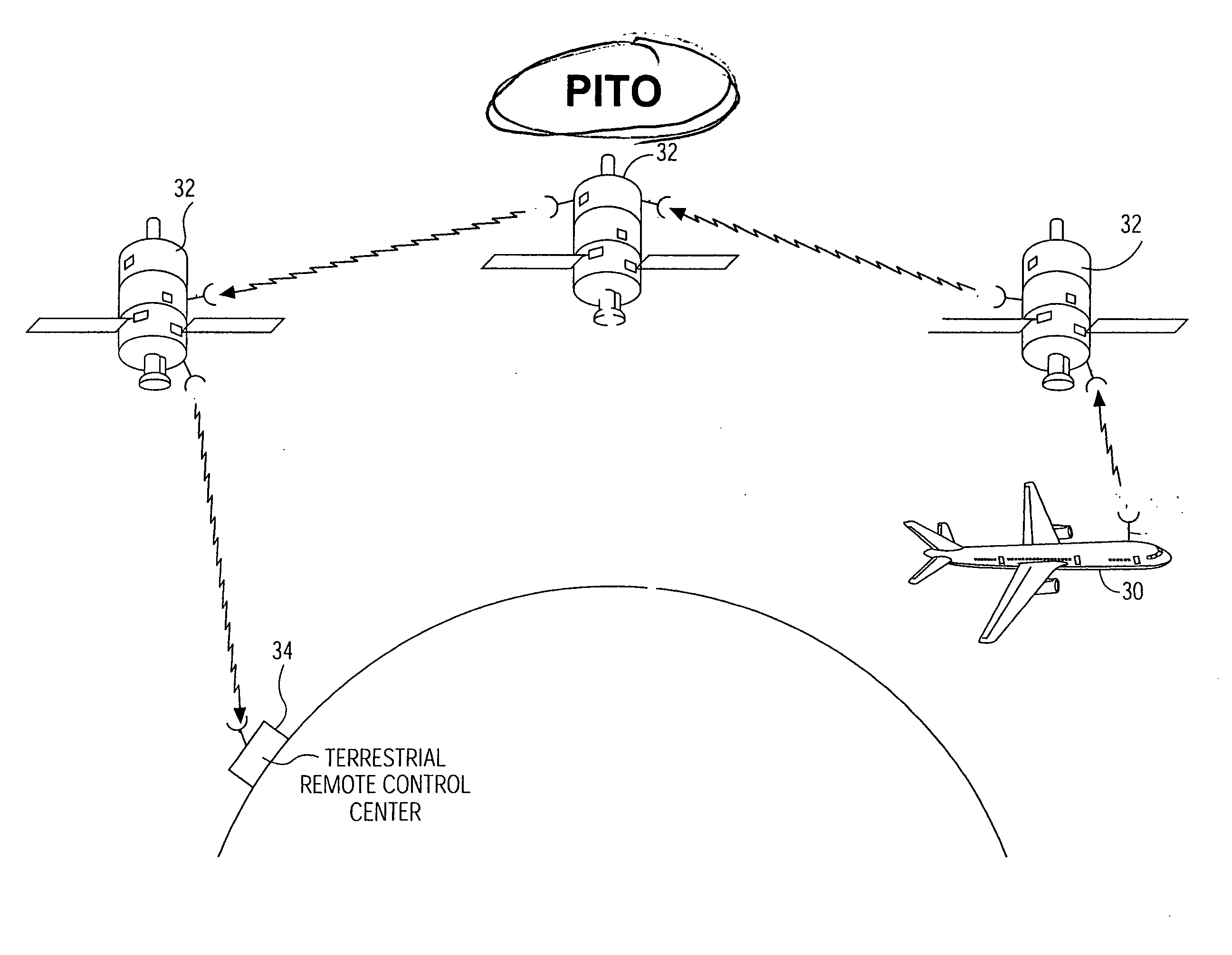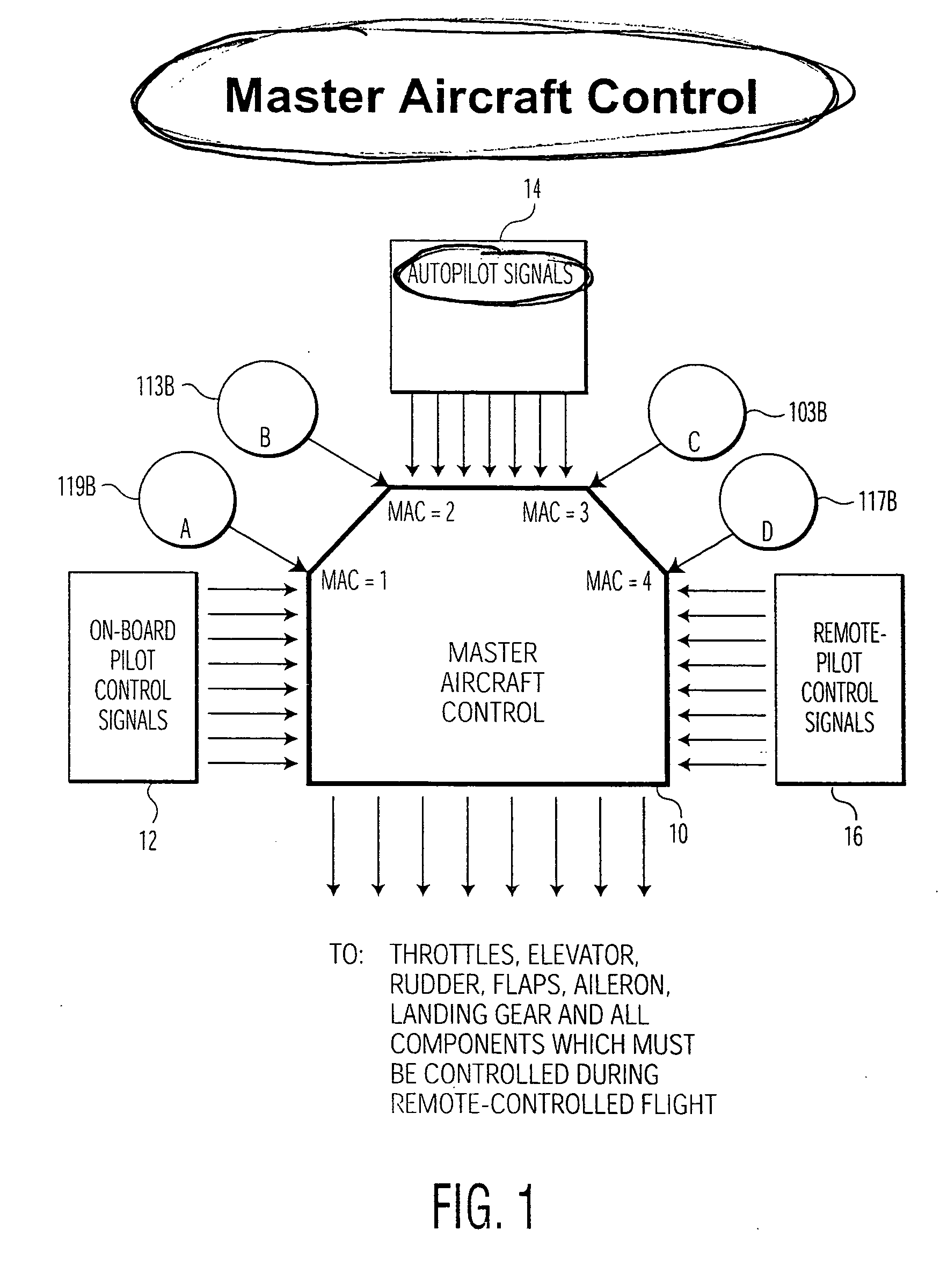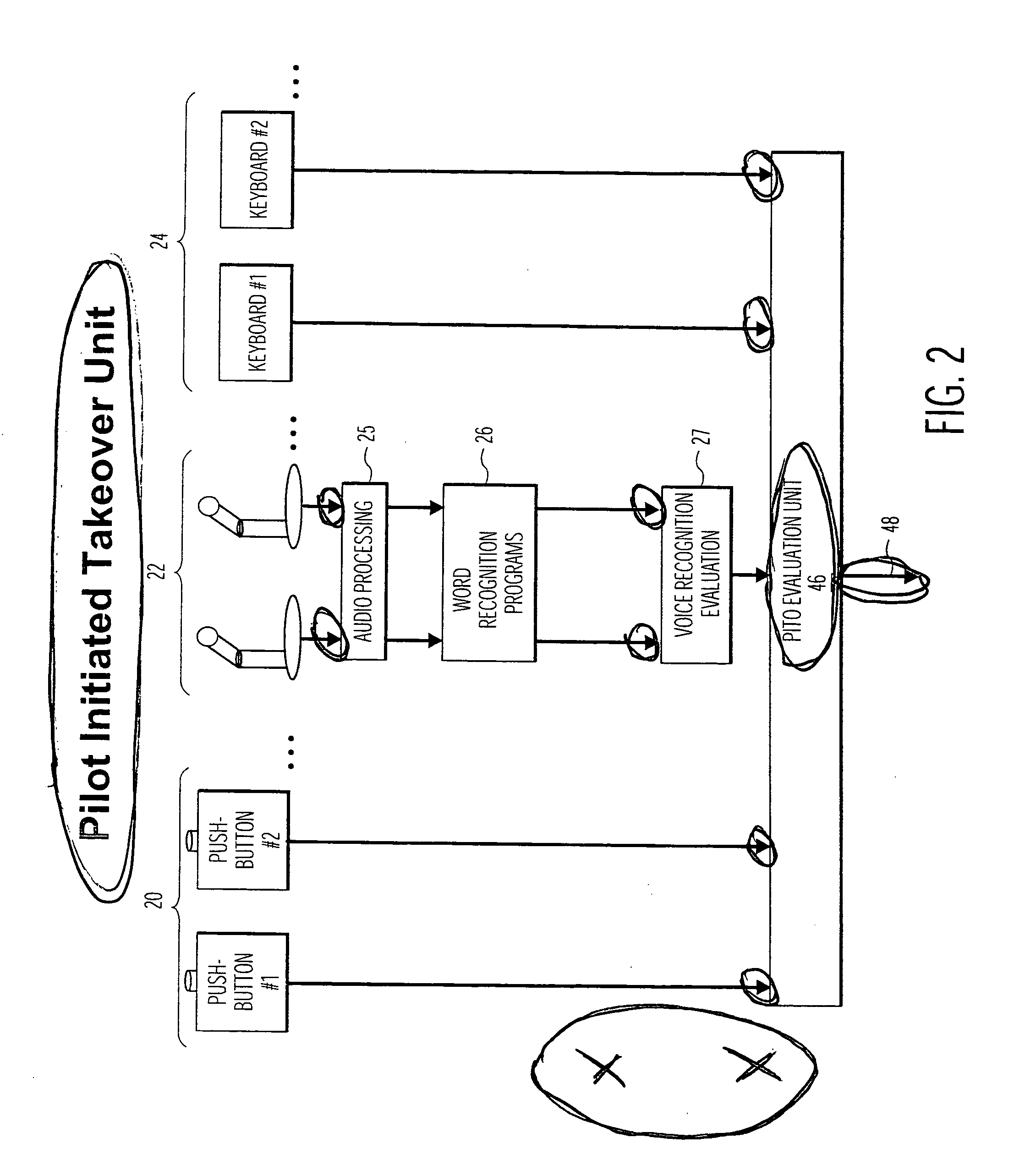Method and system for controlling a hijacked aircraft
a technology for hijacked aircraft and control methods, applied in vehicle position/course/altitude control, process and machine control, instruments, etc., can solve problems such as aircraft crashes, and achieve the effects of increasing the security of the remote control flight system, reducing the window in time, and high outpu
- Summary
- Abstract
- Description
- Claims
- Application Information
AI Technical Summary
Benefits of technology
Problems solved by technology
Method used
Image
Examples
Embodiment Construction
Contents
[0059] 1. Overview [0060] 2. System Elements and Basic Operational Features [0061] 2.1 Master Aircraft Control [0062] 2.1.1 MAC States [0063] 2.1.2 MAC State Transitions [0064] 2.1.2.1 Transitions from MAC State 1[0065] 2.1.2.2 Transitions from MAC State 2[0066] 2.1.2.3 Transitions from MAC State 3[0067] 2.1.2.4 Transitions from MAC State 4[0068] 2.1.3 Other Embodiments of Aircraft Control [0069] 2.2 Pilot Initiated Takeover Unit [0070] 2.2.1 Pilot Initiated Takeover Unit Hardware [0071] 2.2.2 Pilot Initiated Takeover Unit Outputs [0072] 2.2.3 Pilot Initiated Takeover Unit: System Operation [0073] 2.2.4 Takeover Nomenclature [0074] 2.3 Methods of Remote Control Initiation [0075] 2.3.1 PITO [0076] 2.3.2 Distant RITO [0077] 2.3.2.1 Distant RITO of Terrestrial Origin [0078] 2.3.2.2 Distant RITO of Airborne Origin [0079] 2.3.3 Local RITO [0080] 2.4 Methods of Remote Control Maintenance [0081] 2.4.1 Flight Phase Nomenclature [0082] 2.4.2 Autopilot During Phase III [0083] 2.4.3 D...
PUM
 Login to View More
Login to View More Abstract
Description
Claims
Application Information
 Login to View More
Login to View More - R&D
- Intellectual Property
- Life Sciences
- Materials
- Tech Scout
- Unparalleled Data Quality
- Higher Quality Content
- 60% Fewer Hallucinations
Browse by: Latest US Patents, China's latest patents, Technical Efficacy Thesaurus, Application Domain, Technology Topic, Popular Technical Reports.
© 2025 PatSnap. All rights reserved.Legal|Privacy policy|Modern Slavery Act Transparency Statement|Sitemap|About US| Contact US: help@patsnap.com



